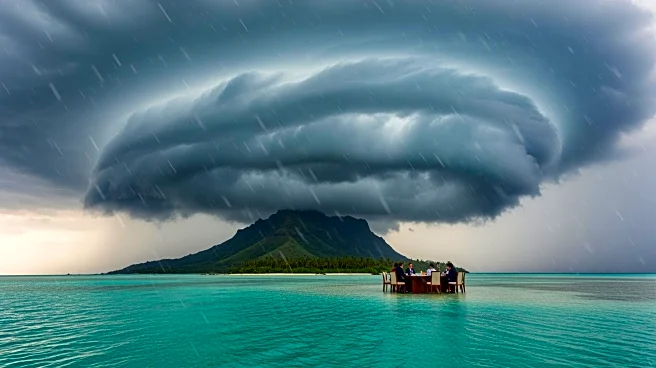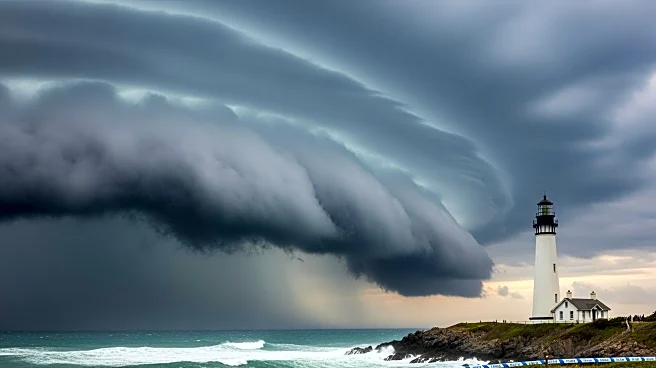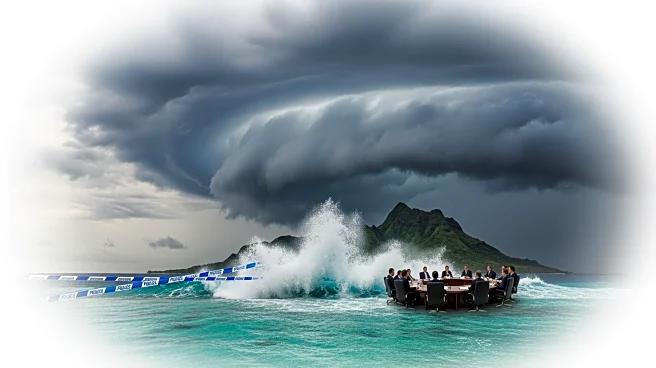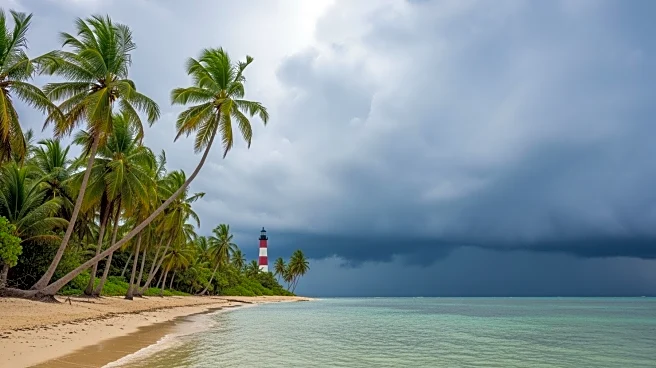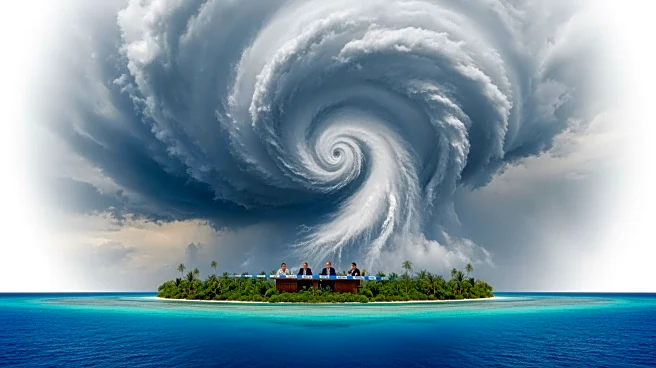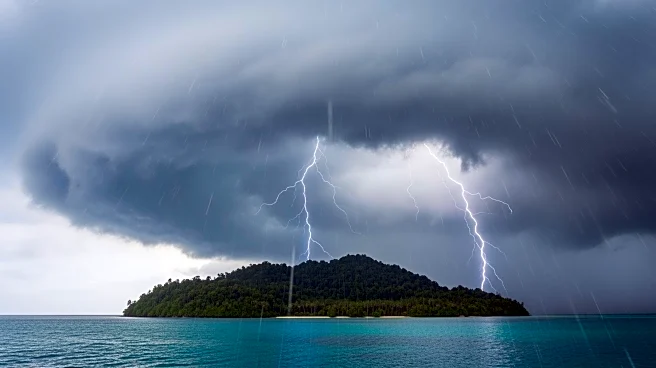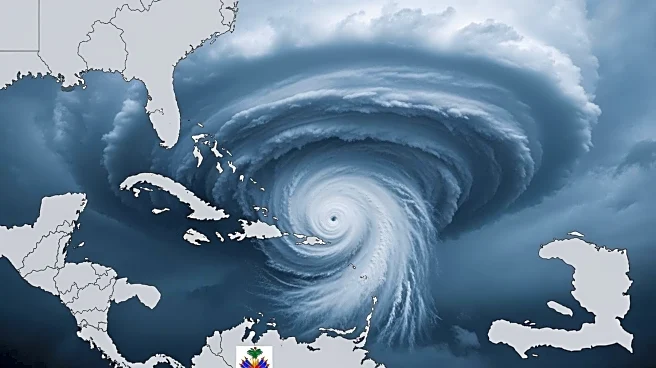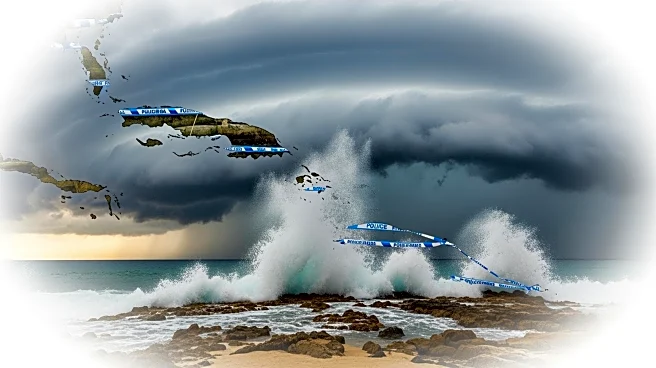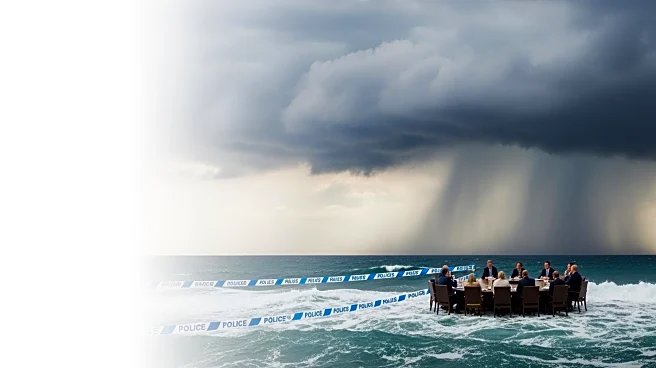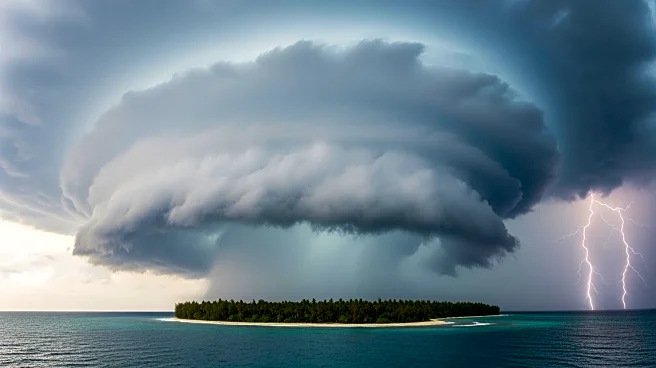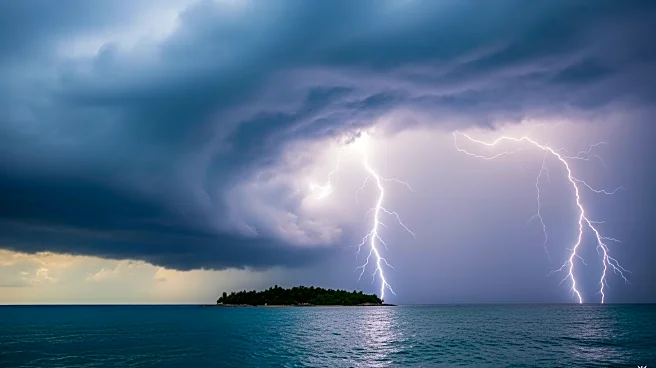What's Happening?
Hurricane Melissa has rapidly intensified into a Category 4 storm, with maximum sustained winds reaching 140 mph. The storm is currently moving west at a slow pace of 4 mph, and is expected to make a sharp
turn to the northeast, impacting Jamaica and Cuba. Melissa's rapid intensification is characterized by a significant increase in wind speed over a short period, making it a severe threat to the regions in its path. The storm is projected to bring heavy rainfall, with potential for up to 40 inches in eastern Jamaica, leading to catastrophic flooding and landslides. Jamaica and Cuba are on high alert as the storm approaches, with expectations of significant damage due to the combination of high winds and heavy rainfall.
Why It's Important?
The intensification of Hurricane Melissa poses a significant threat to the Caribbean, particularly Jamaica and Cuba. The potential for catastrophic flooding and landslides could lead to widespread damage and displacement of communities. The economic impact on these regions could be severe, affecting infrastructure, agriculture, and tourism. Additionally, the storm's trajectory and intensity highlight the increasing frequency and severity of extreme weather events, which may be linked to broader climate change patterns. The situation underscores the need for effective disaster preparedness and response strategies in vulnerable regions.
What's Next?
As Hurricane Melissa continues its path, Jamaica and Cuba are bracing for impact. Emergency services and government agencies are likely to be mobilized to provide aid and support to affected areas. The storm's progression will be closely monitored, with updates on its intensity and trajectory being crucial for ongoing preparedness efforts. The international community may also play a role in providing assistance and resources to help mitigate the storm's impact and support recovery efforts in the aftermath.
